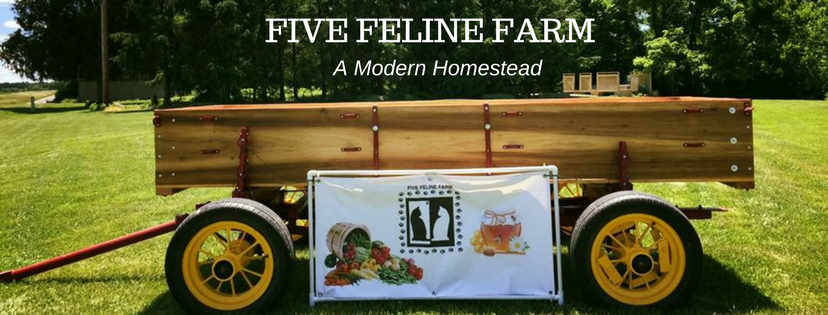Did that last post make your mouth water? Are you craving some creamy roasted garlic spread on tender slices of Italian style bread? Perhaps a side of simple pasta with a browned butter sauce topped with grated Mizithra cheese?
I can tell you from experience that roasting garlic grown a few yards from your kitchen adds an additional layer of satisfaction.
Garlic is planted in the fall and overwinters in the ground. Since the time to plant in Central Illinois is late September/early October, get your order for seed garlic in now. We order from Seed Savers Exchange in Decorah, IA. This company is a non-profit charged with preserving seed that otherwise may be lost over time.
Bed Preparation
Prepare your garlic bed now. Choose a different location each year for garlic, using good crop rotation principles to reduce disease and improve soil health. Here at Five Feline Farm, garlic will be planted where spring lettuce was grown. The excess lettuce has been allowed to sit on the soil. About a week or so before planting, the bed will be turned with a broadfork. (More to come on this technique in a future post.) Garlic is a heavy feeder so adding in compost and Epsom salt will increase your harvest.
When it is time to plant, carefully remove the outer papery layers until the individual cloves can be separated. Don’t remove the papery layer from the individual cloves. Plant each clove about 3 inches deep and 6-8 inches apart with the pointed end upright.
When the weather turns cold, mulch heavily with clean straw. In the spring when the days have warmed to 60 degrees and the night temperatures stay above 40 degrees, you can pull back the straw and keep the bed evenly watered until ready to harvest. You may leave the straw to help keep down weeds but there is a risk that it will stay wet and develop mold. Like most things in gardening, there is a trade off: do more weeding or accept the risks of mold. Decide for yourself how you want to manage your garlic bed.
Our next post will contain ideas about how to use this delicious fruit of your labor. While you are waiting on that post to arrive, check out our Facebook page, Instagram and Twitter feed. Plus, if you haven’t already signed up for our email list, please do. Each post will automatically show up in your email plus an occasional bonus for subscribers only.



